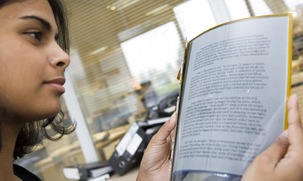Plastic Logic
The British company has secured 100 million US dollar to build the world’s first plant for making semiconductors out of plastic rather than silicon. The plastic semiconductors are made using a process similar to ink-jet printing, which is widespread in the packaging industry for producing labels. The technology will produce flexible active-matrix display modules for ‘take anywhere, read anywhere’ electronic reader products, labels and smart clothing. The technology could cut the price for electronic circuitry by up to 90 per cent. Plastic Logic will build a factory by the end of next year in Dresden, Germany.
Principal investors in the company are: Amadeus Capital Partners, Oak Investment Partners, Tudor Investment Corporation, Intel Capital, Polytechnos, Bank of America Equity Partners, Morningside Technology Ventures, Dow Venture Capital, BASF, Nanotech Partners, Siemens Venture Capital. Yasuda Enterprise Development Co, Quest for Growth and Merifin Capital.

Images and videos available at www.plasticlogic.com/hi-res.php
Polymer Vision
Almost at the same time of the investment announcement by Plastic Logic, Philips published the announcement, that Polymer Vision, producer of flexible and rollable LCD screens, would become independent. The company with with subsidiaries in Eindhoven and Heerlen will continue as Polymer Vision Ltd. The Luxembourg capital investor Technology Capital invests 21 million euro; Philips will keep a minority of 20 percent, while the 35 employees will have the remainder of the shares.
Polymer Vision has developed the world’s first rollable electronic screen, dubbed as Readius. This first prototype proves the integration capability of the rollable display technology in a hand-held mobile device. Ever since, there has been growing market interest in this breakthrough display technology. The paper-like display can be rolled out to a greater size than the actual device itself. It is easy to read, even in bright sunlight, and has significantly lower power requirements than an LCD display with backlight. Once the user has finished reading, the display can simply be rolled back into the device. This makes the rollable display ideal for mobile applications such as mobile phones, document readers and personal navigation systems.
 Click here to see the Rollable Display READIUS™ video (WMV-file)
Click here to see the Rollable Display READIUS™ video (WMV-file)Both companies use the same technological starting point of the technology, developed by E-Ink.
Tags: digital paper, ereader
RSS feed: http://buziaulane.blogspot.com/rss.xml
Blog Posting Number: 627

No comments:
Post a Comment